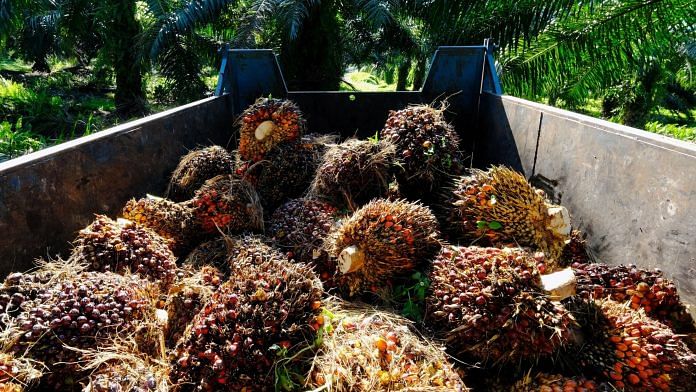New Delhi: Faltering monsoon rains in India are posing a risk to domestic soybean and peanut crops, and may prompt the world’s biggest palm oil importer to boost purchases from top growers Indonesia and Malaysia.
The world’s second-most populous nation, where eating fried food is a national tradition, depends on overseas suppliers for as much as 70% of its edible oil needs. Concerns are growing that deficient monsoon rains this year could hurt crops, raise food prices, threaten a nascent economic recovery and boost imports of farm goods.
Inbound shipments of palm oil will be higher in the year starting on Nov. 1 than an estimated 8 million tons in 2020-21, said G.G. Patel, a veteran trader and managing partner of GGN Research. He didn’t provide an estimate for the next year. India mainly imports palm oil from Indonesia and Malaysia, which are about 2,400 miles and 3,000 miles away respectively from New Delhi.
Deficient showers in the western state of Gujarat, India’s biggest peanut grower, and erratic showers in Madhya Pradesh, the nation’s No. 1 producer of soybeans, are likely to hit oilseed crops, said Patel, who has been trading edible oils for more than five decades. Poor rains in the northern Rajasthan state will potentially curtail prospects for winter-sown mustard crop as well due to a reduction in soil moisture, he said.
Private weather forecaster Skymet Weather Services Pvt. said Monday that India is likely to miss a normal monsoon forecast due to patchy rains in July and August and an unfavorable weather pattern. According to the India Meteorological Department, the nation’s weather bureau, cumulative rainfall in the June-September rainy season so far has been 9% below normal.
Soybean production in 2021-22 will be lower than the estimated 9.2 million tons for the previous year, while peanut output may drop from 5.4 million tons, he said. According to the farm ministry, total area under monsoon-sown oilseeds was 18.8 million hectares (46.5 million acres) as of Aug. 20, compared with 19 million hectares a year earlier. Sowing of some crops will continue until the end of this month, it said.
Showers in Gujarat have been 47% lower than average so far, the weather office said. Weaker monsoon conditions will continue to prevail over several parts of the country during the next 4 to 5 days. – Bloomberg
Also read: How cars fueled by ethanol can add to India’s food inflation






